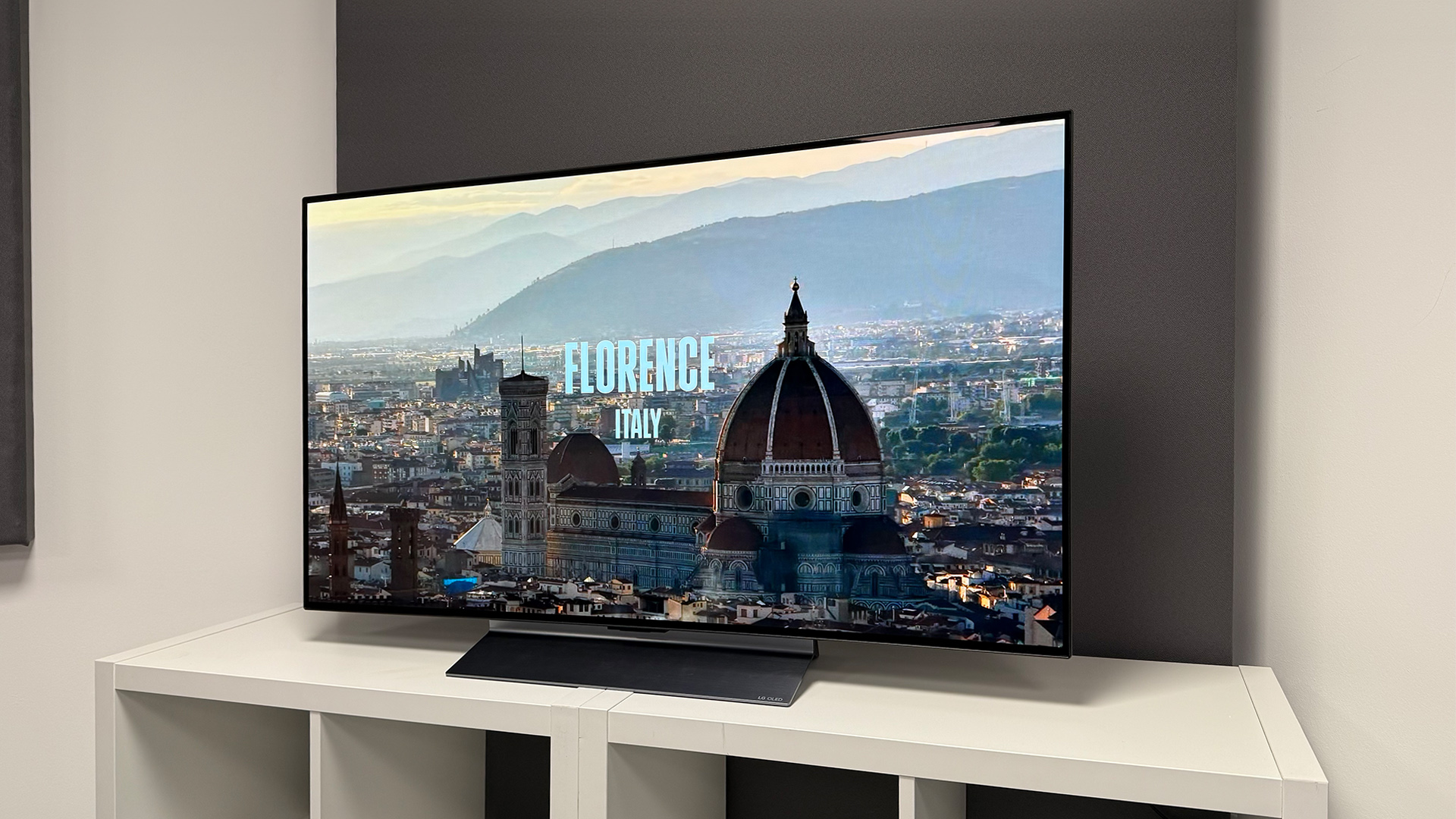48-inch OLED TVs are severely underrated, and it seems like the major manufacturers can't decide if they love or hate them
Small OLEDs are great, but not everyone seems to be convinced

The last week of my life has consisted of sitting in our AV testing facility, evaluating the performance of three 48-inch OLED TVs; what a way to spend the summer.
All jokes aside, this has been an interesting period of TV testing, as we seldom see OLEDs in this size. LG submits its 48-inch C-series model each year (with the 48-inch C5 being no exception), while the other manufacturers have tended to shy away.
Thankfully, that era has ended, as Samsung and Panasonic have both been eager to show us what their compact OLED TVs can do to steal LG's spotlight.
And, no spoilers, as a couple of our reviews are yet to be published, they do a pretty good job of snatching LG's thunder. Both the S90F and Z90B (from Samsung and Panasonic, respectively) are shaping up to be worthy adversaries to the longstanding Award-winning model.
I won't disclose any scores; you'll have to wait for our full reviews for that, but testing these TVs has opened my eyes to the world of smaller OLED TVs.
Comparatively speaking, 48-inch OLEDs are a niche in a market where 100-inch sets are becoming increasingly normalised. The sweet spot remains at 55- and 65-inches for now, while the smaller sets, namely the 42-inch and 48-inch sizes, aren't quite as popular.
That being said, they still deserve appreciation, and I'm glad to see the three manufacturers mentioned above remain committed to the form factor. LG gets bonus points, as last year it launched a 48-inch version of its entry-level B-series OLED, while this year we saw the flagship G-series get scaled down to 48 inches too.
The latest hi-fi, home cinema and tech news, reviews, buying advice and deals, direct to your inbox.
However, there is one company that has very recently changed its stance. Philips, which has previously offered its mid-range 800-series OLEDs in a wide variety of sizes, has axed its smaller OLEDs in favour of launching the OLED810 in only a sizable 77-inch size.
My newfound appreciation of these pint-sized sets has me questioning if this is the right call. Personally speaking, I'm a big fan of Philips TVs, and the OLED809 was a TV I spent a considerable amount of time admiring last year; and yes, Ambilight is a major draw for me, as I'm sold on its immersive qualities.
Offering the OLED810 at 77 inches will appeal to those with larger living rooms, and I understand that Philips has its reasons – namely that it will price its OLED760 model very competitively.
That entry-level OLED will come in a 48-inch screen size option (though UK availability hasn't been made official yet), but it will use a less-powerful processor and a panel that doesn't reach the same claimed peak brightness as the step-up OLED810 model.
Now, it's not the only company to somewhat neglect the screen size. Sony, which has been on an OLED hot streak these last couple of years, is still relying on the A90K (which launched back in 2022) to serve as its smaller OLED model.
While it's unquestionably a good TV, it's also really quite outdated and, even worse, still pretty expensive. The A90K runs Android TV, which has now largely been replaced by Google TV, and Sony has made some significant picture processing upgrades in recent years with its newer processors, which means the A90K is starting to lag behind.
This is quite the divide. On one hand, two of the biggest TV manufacturers are pushing 48-inch OLEDs, whereas Sony and Philips are refocusing on the bigger, more premium sets.
Contextually, Philips and, to a lesser extent, Sony tend not to sell as many TVs as Samsung and LG; both of which remain juggernauts within the industry. This could hint towards why the companies are hesitant to commit to newer 48-inch OLEDs, as, based on our knowledge, they make up a fairly limited proportion of overall TV sales.
Personally speaking, I appreciate that these TVs can deliver a truly cinematic experience without taking up too much space, so I'm all for more models on the market.
Regarding Philips' XL OLED gamble, we'll have to wait and see whether it will pay off; in the meantime, we can wait for Sony to announce a successor to the A90K.
MORE:
Read our full LG OLED48C5 review
As well as our Sony A90K 48-inch review
And check out our picks for the best OLED TVs
Lewis Empson is a Senior Staff Writer on What Hi-Fi?. He was previously Gaming and Digital editor for Cardiff University's 'Quench Magazine', Lewis graduated in 2021 and has since worked on a selection of lifestyle magazines and regional newspapers. Outside of work, he enjoys gaming, gigs and regular cinema trips.
You must confirm your public display name before commenting
Please logout and then login again, you will then be prompted to enter your display name.
